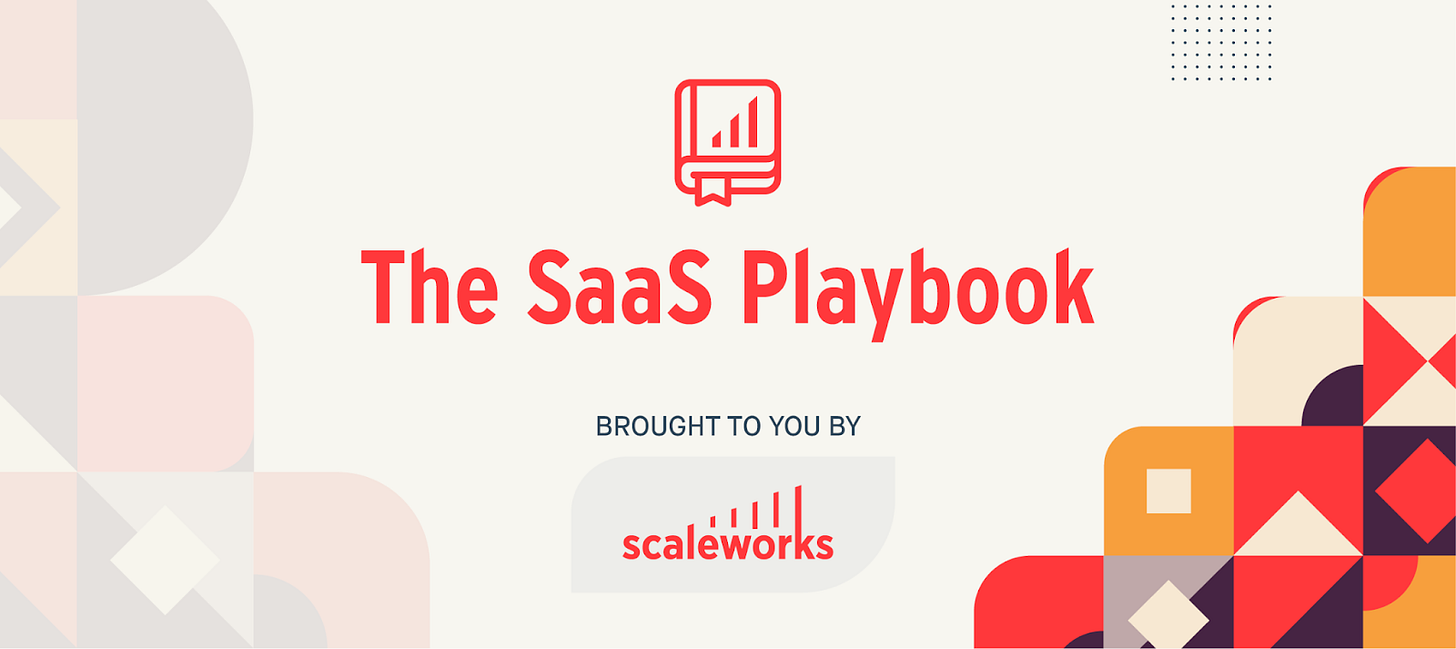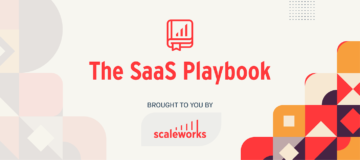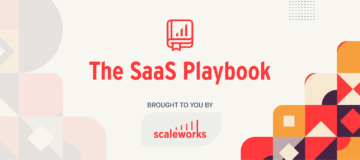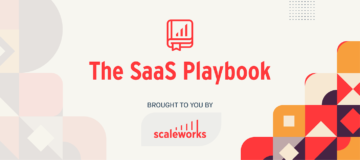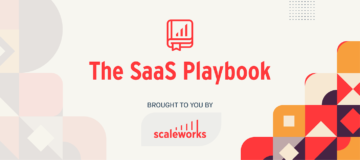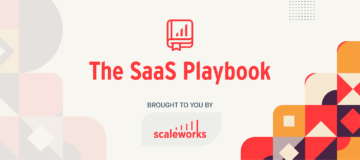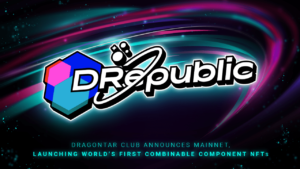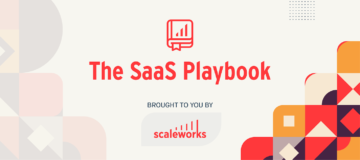Welcome back to The SaaS Playbook, a bi-weekly rundown of the top articles, tactics, and thought leadership in B2B SaaS. Not a subscriber yet?
💇 It’s hard to say exactly how much public softwares’ cratering valuations are affecting the private market because we have limited info on private companies. But there are certainly signs indicating a decrease in private valuations as well – Forge Global (a secondary market for private company shares) told the Financial Times that “the prices of companies on it’s platform had fallen 19.9% in February and March compared with the fourth quarter of last year”. It’s worth noting that secondary data is at best a guideline for estimating market sentiment (recall Coinbase sold secondary shares at a more than $100b valuation before IPOing at less than half of that), but regardless, 20% is a big haircut! Carta data backs up the claim as well, showing that Series C round sizes (-23%) and valuations (-47%) are down in early Q1 22’. This will make it that much harder for the late stage startups who raised in Q3/Q4 2021, when valuations were at their peak, to raise at an upmarket valuation.
❎ Software M&A was at an all-time high in 2021, with Software Equity Group reporting over 3,400 deals for the year. There are plenty of reasons why M&A is an attractive option for startups (more revenues, greater market share, accelerated roadmaps, and differentiation to name a few), but this post is a great deep dive on one of them in particular – cross selling. Selling your own product into an acquired businesses’ customer base and selling their product into yours sounds like easy revenue, but the truth is that the majority of acquisitions undershoot their cross-selling objectives significantly. Nailing your product merging strategy, company wide integration, and specific cross selling tactics all play a major role, and are covered in the read.
🌱 PLG (Product Led Growth) startups employ a bottoms-up approach, using their product as the core mechanism to land end users. PLG has proven to be one of the best strategies for software to gain traction, but at a certain scale, most companies will need to explore an enterprise sales model to capture their full TAM. Janelle Teng (from Bessemer) explains the delicacy required to grow a PLG company to an enterprise sales machine, and why timing is a key component. If you go enterprise too soon and you can lose your momentum, but there are of course opportunity costs of waiting too long. Teng suggests 25m ARR as the right time to consider adopting an enterprise model, and shares six lessons from their developer platforms (including Auth0, PagerDuty, and Twilio) on what they learned when introducing enterprise sales to a traditionally PLG organization.
🚓 Most of the time, when we think about scaling, we prioritize marketing, sales, and customer success. Equally as important is your product's technical side - network bandwidth, features, and security are all important pieces of your product that need to evolve as you scale. Intercom recently broke down some of their best advice for scaling. There are a few obvious “don’ts,” like avoiding technical debt and not over-optimizing. Given some of the recent headlines and as more companies rely on SaaS products, there’s a strong case to be made for building security from the start. For one, it’s easier to be proactive than reactive. Secondly, as you scale, you could be looking at moving into new customer segments - and if those segments include enterprise customers, you’ll need to provide proof of your security safeguards.
- SEO Powered Content & PR Distribution. Get Amplified Today.
- Platoblockchain. Web3 Metaverse Intelligence. Knowledge Amplified. Access Here.
- Source: https://thesaasplaybook.substack.com/p/-how-public-software-multiples-impact
- 10
- 2021
- 2022
- 9
- a
- About
- accelerated
- acquired
- acquisitions
- Adopting
- advice
- affecting
- All
- and
- approach
- articles
- attractive
- avoiding
- B2B
- back
- Bandwidth
- base
- because
- before
- bessemer
- BEST
- Big
- Broke
- Building
- capture
- case
- certain
- certainly
- claim
- coinbase
- Companies
- company
- compared
- Consider
- Core
- Costs
- could
- course
- covered
- Cross
- customer
- Customer Success
- Customers
- data
- Deals
- Debt
- decrease
- deep
- deep dive
- Developer
- down
- Early
- easier
- Enterprise
- enterprise customers
- equally
- equity
- evolve
- exactly
- Explains
- explore
- Fallen
- Features
- few
- financial
- Financial Times
- For Startups
- Fourth
- from
- full
- Gain
- given
- Go
- good
- great
- greater
- Group
- Grow
- Growth
- Half
- Hard
- Headlines
- High
- How
- HTTPS
- Impact
- important
- in
- include
- Including
- info
- integration
- introducing
- IT
- Key
- Land
- Last
- Late
- Leadership
- learned
- Led
- Lessons
- Limited
- Long
- looking
- lose
- M&A
- machine
- made
- major
- Majority
- make
- March
- Market
- market sentiment
- Marketing
- mechanism
- merging
- model
- Momentum
- more
- most
- moving
- name
- Need
- network
- New
- objectives
- obvious
- ONE
- Opportunity
- Option
- own
- particular
- Peak
- pieces
- platform
- Platforms
- plato
- Plato Data Intelligence
- PlatoData
- Play
- Plenty
- Post
- Prices
- Prioritize
- private
- Private Companies
- Proactive
- Product
- Products
- proof
- proven
- provide
- public
- Q1
- Quarter
- raise
- raised
- Read
- reasons
- recent
- recently
- Regardless
- Reporting
- required
- revenue
- revenues
- roadmaps
- Role
- round
- SaaS
- sales
- Scale
- scaling
- secondary
- Secondary Market
- security
- segments
- Selling
- sentiment
- Series
- Series C
- Share
- Shares
- significantly
- Signs
- SIX
- sizes
- Software
- sold
- some
- Soon
- specific
- Stage
- start
- Startups
- strategies
- Strategy
- strong
- success
- Suggests
- tactics
- TAM
- Technical
- The
- The Financial Times
- their
- thought
- thought leadership
- time
- times
- timing
- to
- too
- top
- traction
- traditionally
- transitioning
- Twilio
- Update
- users
- Valuation
- Valuations
- Waiting
- What
- WHO
- wide
- will
- worth
- Your
- zephyrnet

